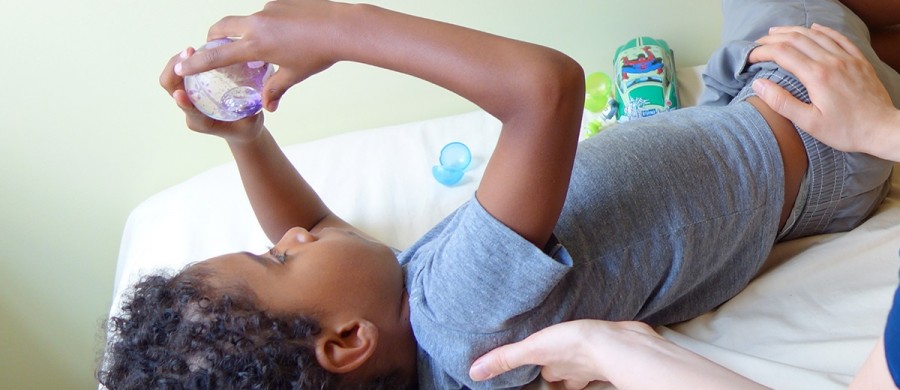Sensory processing disorders are becoming more commonly understood within the field of education and more familiar to parents. Children with sensory issues can become overloaded with sensory stimulation or the need for sensory input.
Examples of overload range from the clothing labels that can drive children with sensory issues mad, the child shying away from noise, being picky with food, struggling to recognise when they are cold, overheating very quickly, requiring constant movement, chewing, sucking on their clothing and then hating to wear those wet clothes – this is just to list a few of the everyday struggles for a child with sensory issues.
This is not just about a child avoiding sensory stimulus, but also about children seeking sensory stimulation to be able to regulate themselves.
A recognition of sensory needs can be life-changing to parenting or working with children.
With knowledge that your child or a child that you teach may have sensory issues (and we certainly all have sensory needs); it is important to get to know how to help the child regulate themselves.
When a child is dysregulated, the frontal lobe of the brain will struggle to function – the frontal lobe is the area of the brain where the logic, reasoning, problem solving and effective verbal communication abilities are controlled. Dysregulation causes the brain to go into [what I describe as] a “safety mode”, therefore, it taps into the lower part of the brain that it absolutely needs for human survival – (primal functioning) – which controls breathing, heart rate, digestion etc.
Often when parenting or working with a child with sensory overload, we also become overloaded – ‘What should we do now? How should we approach the child? What can we do to help them see their impact?!’ Often, the adult may have an emotional connection to the child, yet can be so frustrated by the meltdowns and the irrationality of the condition. It is likely that the adult will have an increased heart-rate and quickened breathing and that anxiety has increased. It is important to understand this impact on the adult as well as the child to learn how to manage in these times. I would suggest that it is easier to learn about the condition by mentally removing yourself and aiming for a level of objectively about how to make your next step when managing an ‘overwhelmed child’:
‘If you imagine that you are approaching an intelligent animal that is overwhelmed by its environment, maybe the environment is different or the animal is hungry or the animal is experiencing pain – this is a situation that can cause distress – what will not work is any verbal reasoning – what will work is to calm the animal, return its environment to one of safety, satisfy the hunger, whilst you yourself remaining in a calm and rational state’. This does not reflect upon the animal’s intelligence or indicate that they meant to do harm; it reflects that they needed to be safe and needed support to be regulated.
A child who is dysregulated (having an overload, a meltdown or sensory seeking) is having a physiological response – often called the fight or flight response (and not bad behaviour as may have been considered).
The symptoms of fight or flight can be:
Screaming, biting, running and hiding, putting their hands over their ears, trying to block out sensory input, anger, throwing things, increased violence, crying, isolating themselves from others. It can also be displayed though a change of facial expression, slamming doors, seeking sensory input, an increased heart-rate etc.
If this is approached with a strategy of discipline and/or verbal reasoning, then the situation is unlikely to improve (as mentioned earlier, this part of the brain is not functioning at its potential). What is needed is loving care, calm and safety. It is important at this time to remember the story of the animal overwhelmed by its environment – which requires the regulated adult to co-regulate it.
The behaviour may repeat again and again, but the strategy for calming the child and understanding their need will improve. The more knowledge that you gain of the child’s individual needs, the more understanding and attuned you will become for the child. The child needs to be advocated for and supported, as they grow they will need to learn strategies to self-regulate; but the most successful way is for the adult to first understand how to best support the child; and for the adult to be regulated themselves, so that there is the ability to maintain the best state of regulation for all.
Behaviours can be addressed when the child is able to engage the frontal lobe of the brain again, and is able to reason and problem-solve (when there is a mood of calm), and therefore engage in verbal communication.
The child will still need to have guidance and boundaries; and it is imperative that they are kept safe from harm, but it is important to recognise the additional challenges that the child faces. Parenting and/or teaching the child will need to be continually develop to the child’s individual needs to help them manage with the additional pressures that life throws at them.
Parents report a significant change in their child’s ability to regulate when the parent themselves is able to understand their child, and model regulated behaviour.
Author – Sarah Muller – Managing Practitioner

